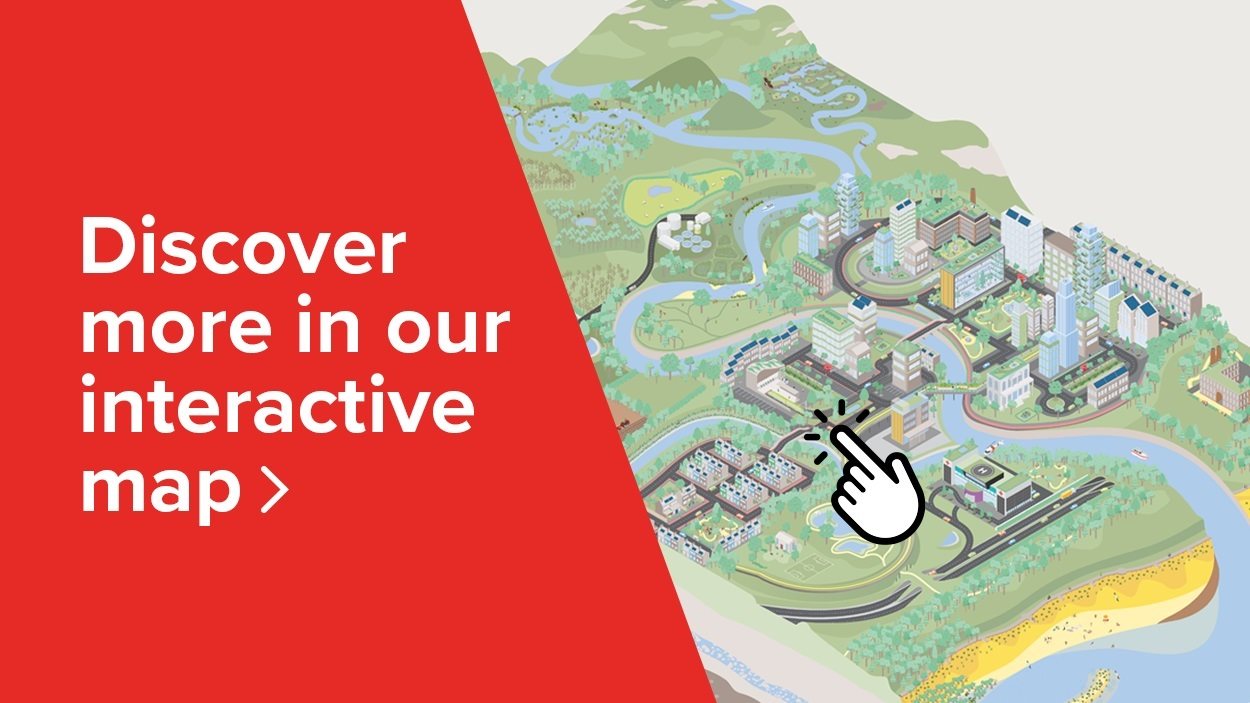Biodiversity and habitat loss are accelerating everywhere, and our expanding cities are some of our most nature-depleted areas, putting at risk many of the life-sustaining ecosystems services upon which communities and livelihoods depend. Cities are also increasingly vulnerable to the impacts of climate change, including soaring temperatures, storms and sea level rise. Citizens of Delhi, India, have recently endured record-breaking temperatures approaching 50°C, and New York, Jakarta, Mumbai and Bangkok are just some of the capital cities affected by coastal flooding.
Yet, with more than half the world’s population residing in cities, they have the opportunity to be drivers of positive change – helping to address the climate and ecological emergency facing the world.
An interactive nature based solutions map
The recently published BiodiverCities by 2030 insight report calls for cities to reintegrate nature into their spatial planning decisions and restore the ‘natural layer’ to development. A newly released interactive nature based solutions map enables planners, project engineers, owners and designers to plot how best to replenish nature in their cities, building their resilience to climate impacts and helping citizens reconnect with the natural world. The many co-benefits include improved air and water quality, temperature regulation, habitat compensation and carbon sequestration, while access to green space and nature is good for physical and mental wellbeing.
The map supports the consideration of nature from the start of a project, to plan for and maximise the benefits, and to increase confidence around the performance, cost and long-term maintenance requirements of nature based solutions.
Returning nature to cities
Here is the connected six-step decision framework outlining a systemic and integrated approach to include nature based solutions through all stages of the project cycle:
- Establish a shared vision.
- Identify the options for nature based solutions.
- Quantify a range of benefits from each solution and agree a preferred option.
- Finalise design and prepare for construction.
- Construction.
- Maintain, monitor, evaluate and learn.
And here are some examples of cities that have successfully implemented these measures:
- Installing sustainable urban drainage systems or SuDS in Counters Creek, west London, has successfully reduced surface water run-off entering combined sewers and flooding basements during periods of heavy rainfall. The rain gardens and tree pits are attractive new features that improve the streetscape. They are maintained by the local community, encouraging resident ownership and pride in their street.
- Transforming degraded and abandoned land into a new riverfront park in Newark, New Jersey, has improved air quality, helped to mitigate the urban heat island effect, and reduced the runoff of sediment and pollutants into the Passaic River. It also reconnects Newarkers with the river.
- Removing a section of concrete channel in the Lower Lam Tsuen River in Hong Kong and restoring the natural profile – with boulders, cobbles, coarse gravels and aquatic and riverbank vegetation – has improved the quality of the water, which is an important source of drinking water. A study six months after the work was completed recorded an increase in birds, dragonflies, amphibians and reptiles, freshwater fish and aquatic invertebrates.
- Implementing natural flood management measures across the River Aire catchment area in Yorkshire, England, will reduce flood risk in the city of Leeds, and deliver wider benefits, such as carbon sequestration, biodiversity improvements and societal gains.
Adopting 'systems thinking' in city-planning
Both the map and framework reinforce the insight report’s recommendation for city authorities to adopt ‘systems thinking’ in the way they plan and manage cities. Nature based solutions in the map across an area or water catchment – from the mountains and fields, through the city to the coast – show the interconnections between economic and social infrastructure and the natural environment, and where nature can play a part in delivering better outcomes.
Developing this system-level picture enables actions to be evaluated and valued for their impact on local air quality, flood risk, food poverty, energy poverty, health and wellbeing as well as carbon reduction. Assigning values to these co-benefits allows decision makers to quantify the trade-offs from competing changes to land, better identity solutions that will enhance both human development and conservation, and to deliver a robust business case.
Encouraging investment in nature based solutions
As the insight report highlights, making nature based solutions attractive to financial markets and private sector investors requires mainstreaming biodiversity data and promoting new models to de-risk investments. Collecting evidence over time on the performance, costs and maintenance of nature based solutions and their co-benefits would build investor confidence. The introduction of policy and regulatory incentives to share risks and rewards equitably across interested parties – such as city authorities and local businesses and landowners – would go a long way to encourage investment in less conventional interventions to combat flooding and soaring temperatures and the other challenges facing cities.
By prioritising nature in their investment decisions, urban leaders can improve the resilience and liveability of their cities, contributing to a secure, sustainable future for nature and people.
- First published on 14 Jun 2022 on www.weforum.org
Marieke Nieuwaal, Global lead for nature-based solutions, Mott MacDonald



